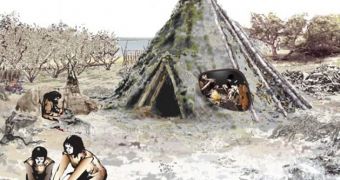A group of researchers from Headland Archeology brought out from the ground what appears to be the oldest home ever known in Britain.
The construction was found at a location close to Edinburgh and has later been dated by archaeologists to around 8240 BC.
“This discovery and, especially, the information from the laboratory analyses adds valuable information to our understanding of a small but growing list of buildings erected by Scotland’s first settlers after the last glaciation, 10,000 year ago,” declared Historic Scotland Archaeologist Rod McCullagh, as cited by Daily Mail.
“The radiocarbon dates that have been taken from this site show it to be the oldest of its type found in Scotland which adds to its significance,” he added.
The ruins of the once human shelter consisted of an almost-seven-meter large oval pit, rounded by several post holes and a few fireplaces.
After a complex re-constructive process, researchers managed to obtain a hypothetical picture of the real house. They say there were wooden posts held by the several holes, as to sustain the walls and the roof, the latter having been most probably grass covered.
They also suggested the house was used rather as a seasonal shelter than as a permanent residence. Most probably, they were spending the cold winter time there.
Over 1,000 flint objects have also been unearthed, most of them composing weapons or food preparing tools.
Regarding the residents' nourishment, the bones fragments archaeologists have found indicate it must have been fish and birds that they ate most commonly, but also wild boar and maybe sometimes deer.
A large amount of carbonized hazelnut crusts was also found.
The findings come to support the previous knowledge on the ancestors habiting the area, according to which those were mostly hunter gatherers.
“The discovery of this previously unknown, and rare type of site has provided us with a unique opportunity to further develop our understanding of how early prehistoric people lived along the Forth,” explains the Project Manager, Ed Bailey.
“Specialist analysis of archaeological and palaeoenvironmental evidence recovered in the field is ongoing. This will allow us to put the pieces together and build a detailed picture of Mesolithic lifestyle.”

 14 DAY TRIAL //
14 DAY TRIAL //